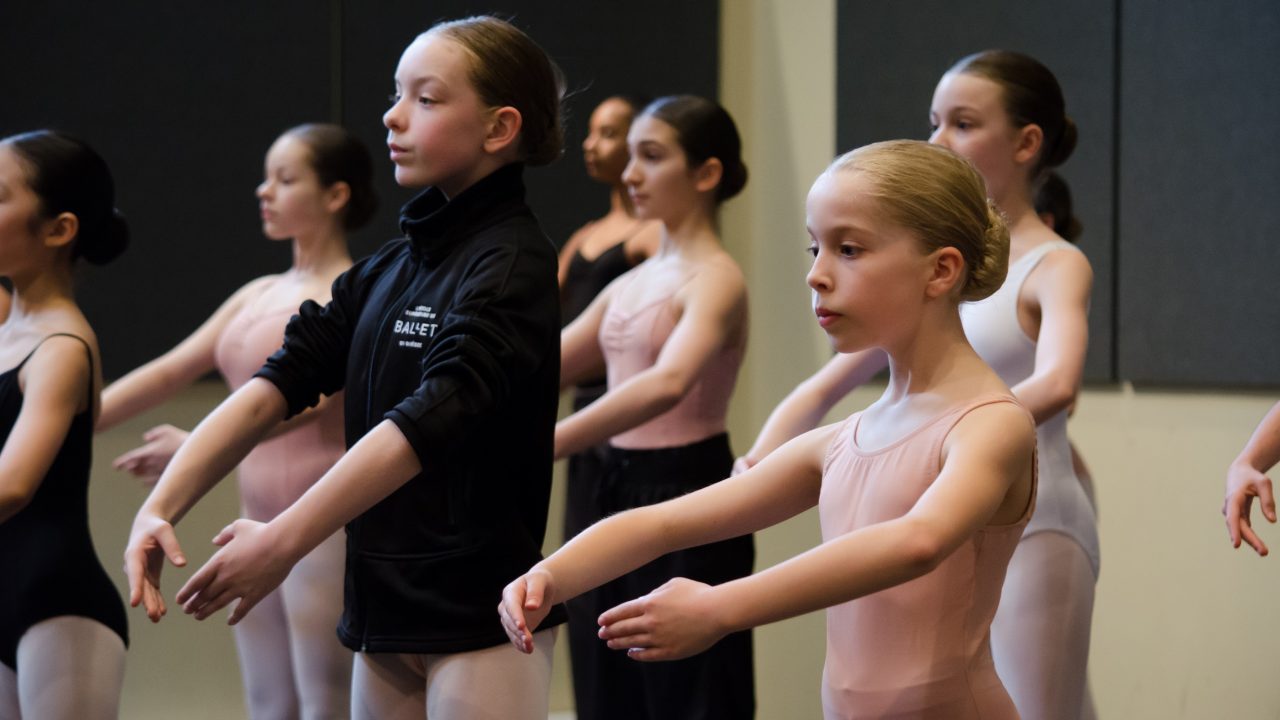
Mini-Lesson for A Delicate Balance
Mini-Lesson for A Delicate Balance
Mini-Lesson for A Delicate Balance
Themes: Dance, Perseverance
Ages: 12–14
A Delicate Balance, Christine Chevarie-Lessard, provided by the National Film Board of Canada
Keywords/Topics: Dance, Resilience, Determination, Perseverance, Gender and identity, Art, Pursuit of excellence, Quest for identity.
Guiding Question: Does one need to be determined and push themselves to the limit to achieve their goals? What would you sacrifice to make your biggest dream come true?
Summary: A Delicate Balance is a documentary that follows four dancers aged 10 to 14 at the École supérieure de ballet du Québec over the course of a year. Covering everything from entrance interviews to performances, auditions to the final exam, the film reveals the ups and downs experienced by young ballet dancers.
As these adolescents confront the challenges of the professional dance world, they’re also trying to find their own place and forge their own identities. They go through highs and lows, battle injuries and insecurities, push themselves to the limit, and ultimately show us the extent to which resilience can help us achieve our greatest dreams.
Activity 1) In-class activity: My dream
This is an abbreviated two minute clip. Watch the full clip by logging onto CAMPUS using the timecode 54:01 – 56:19.
Think about the concepts of motivation, passion, and dreams.
Personally reflect on your own dreams, hobbies, and what motivates you. Find two or three careers that are directly or indirectly related to your interests.
Choose one of these careers and create an infographic (information sheet) that contains:
- a definition and explanation of the career;
- the level of education required for this career;
- the skills necessary to work in this field;
- the employment opportunities in this field.
Go deeper
Organize a job fair in the classroom in which you present your infographic to the class. This activity will help you discover other careers that might interest you.
Activity 2) Triangle debate – Boys can’t dance!
This is an abbreviated two minute clip. Watch the full clip by logging onto CAMPUS using the timecode 9:15 – 10:28.
This activity gives every student the opportunity to take part in a class debate. This type of informal debate is a good way to explore the issue of critical thinking and come up with some useful conclusions. By the end of the activity, students will have examined gender stereotypes and their harmful effects on individuals and society as a whole.
Instructions: View the suggested excerpt from the film, then discuss the following statement in class: “A person’s gender influences (positively or negatively) their lifestyle and the career they choose.” Make a connection between ballet and the concept of gender.
Divide the class into three equal teams. The first argues in favour of the statement, the second argues against the statement, and the third prepares questions and comments to fuel the debate (jury). Note: teams should be formed randomly to encourage critical thinking, so you must take the position of your team, regardless of whether or not you agree with it.
The debate teams (for and against) are given time to formulate their opinions about the statement and do some brief research. They should also write a two-minute statement to support their opinion. Meanwhile, the jury team should come up with thought-provoking questions that will be asked throughout the debate.
When the teams are ready to debate, place chairs in three groups so that all the teams can see each other. The teacher should facilitate or preside over the debate.
Once the debate has ended, bring the class together and discuss the topics that were raised, such as gender equality, adolescence, and sexism. Lead a final discussion on gender stereotypes and their impact on adolescence.
Go deeper
Question your own behaviour and actions with respect to gender stereotypes. Organize an awareness campaign in the school in order to break gender stereotypes and create a more inclusive environment.
Activity 3) Post-viewing
Post the profiles in the classroom while doing the other activities, since they will help you define concepts and remember important information.
Lead a discussion on the topic of motivation. Write the following sentence on the board: “In my free time, the thing that motivates me and gets me excited is…” Divide the group into small teams to encourage discussion and sharing.
Once the discussion is over, have each team present its definition of the word “motivation” and the things or hobbies that inspire them.
Pour lire cet article en français, cliquez ici.
Discover more Mini-Lessons | Watch educational films on NFB Education | Watch educational playlists on NFB Education | Follow NFB Education on Facebook | Follow NFB Education on Pinterest | Subscribe to the NFB Education Newsletter




